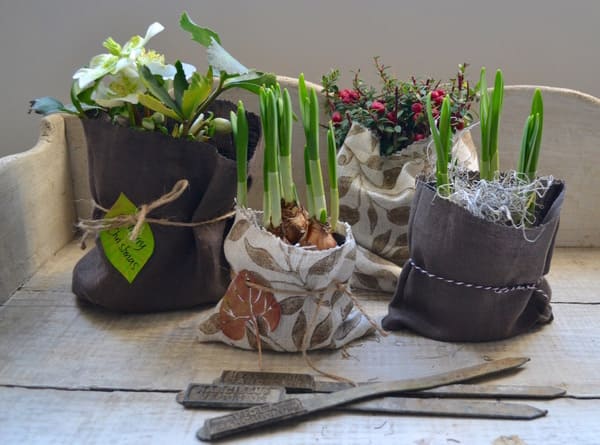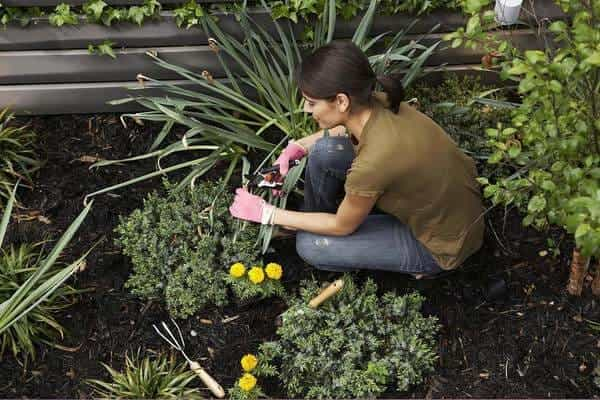How to Move House Plants Across the Country
As if house plants weren’t already a trend, millennials are taking #PlantLife to a whole new level and decorating their homes with plant babies. But what does this mean if you have to move? Moving with a lot of house plants can be tricky and may put stress on your plants, so we wanted to offer some tips and tricks for making a successful long-distance move with plants.
Pre-Move Considerations

You may want all of your plant babies to come with you, but that is not always possible if you want your plants to survive. Plant survival depends on a lot of factors, so consider the following steps before you plan to move your green friends with you.
Best Time of Year to Move
Not all plants are created equal. Some prefer humidity, others prefer dry climate. Some prefer lots of light, others prefer shady or indirect light. There may not be a “perfect time” to move your plants, but a good rule of thumb is to plan your move in the spring or fall, when temperatures are not extreme. Super hot and dry? Cold and humid? These situations could be detrimental to your plants.
Check State Restrictions on Plants
You may not realize, but house plants are still considered as agriculture. Always check the state laws for wherever you are moving to ensure there aren't any regulations on what houseplants you’re allowed to bring in. It will also offer insight on how to properly have them inspected/quarantined to prevent the transmission of harmful pests, diseases, and insects.
Notable states with odd plant regulations are: California, Oregon, Washington, Arizona, and Florida.
I… I Will Survive!
Most plant species have their own personalities- and they can be temperamental. A drastic change in climate or sun exposure can shock them and limit their survival rates.
The Plant Hardiness Zone Map is a great resource to see which of your plants will flourish in your new home. (ex:. A move from Arizona to Michigan may not be ideal for some plants survival, even with adaptations on your end).
Plant it forward!
At this point you should know which of your plants are safe to make the move. So what do you do with the ones you can’t keep? Gift them! If you don’t have any friends or family that would adopt your plant babies, consider donating them to a local nursing home!
Pre-Move Plant TLC

Now you know which plants are moving with you, but to ensure their survival, you still need to properly prep them.
Check for Pests
Start early! Regardless if you’re moving locally or across the country, a month before your move you should start examining your plants for any pests or bugs. Starting early will give you time to do any treatments that may be needed, and ensure you don’t bring the pests with you to your new home. Keep checking weekly until move day for the best results.
Conservatively Re-pot
You probably have your plants in those cute ceramic or clay planters, but to prevent any breakage during the move, it is best to re-pot your plant in plastic or unbreakable pots. Ensure you do this a few weeks before moving to allow your plants to adapt to the transplant.
Prune me
Pruning dead leaves and additional foliage roughly a week before the move will help the plant to stay healthy during the move. This also gives you a chance to prep a few cuttings and propagate them, as some plants may be too big for transport.
Water me
No one wants root rot. Water plants 3-4 days before your move so they won't be too moist or leaking water all over your stuff on moving day. This will also allow them to adjust in their new home for a few days before needing to be watered again.
Packing and Transporting your Plants

All plants, big or small, should be moved in your personal vehicle if possible. Mailing your plants would be the next best option. If for some reason you have to transport your plants in a moving truck or storage container, be sure you load them LAST so that they can unloaded FIRST. Follow these basic guidelines for packing your plants:
Small Plants
- Poke a few holes in the sides of a box, line the bottom with plastic and place pots inside. DO NOT STACK PLANTS!
- Add bubble wrap, newspapers or towels to keep them from shifting or tipping over. These will also serve as insulators to keep your plants warm in colder environments
- For taller plants, put a paper bag around the bottom of the pot
- If possible, only move your plants using a personal vehicle
Trees/Extra Large Plants
- Will often need to be transported on its side. If so, put sphagnum moss on top of the soil in the pot and cover it with plastic wrap. This not only prevents soil from spilling but prevents shock to the roots
- For bushy plants, you can wrap packaging paper around them to keep them compact
- Ideally transport in a personal vehicle, but can also be shipped
We hope that with using these suggestions you were able to successfully move your house plants! The last thing is to ensure that you take the time to unpack them first and place them in a spot in your new home that gets plenty of indirect sunlight. This way they can start their journey to adapt to their new environment. Happy planting!
Related Posts
By accepting you will be accessing a service provided by a third-party external to https://www.movinglabor.com/